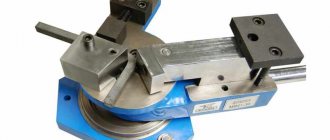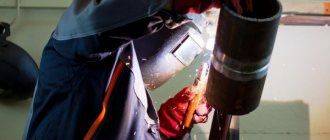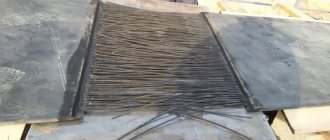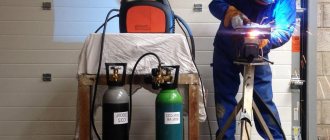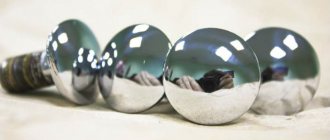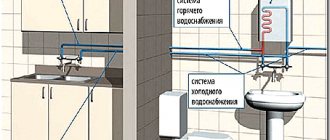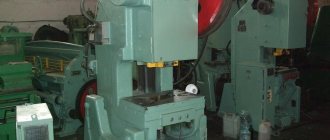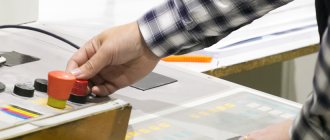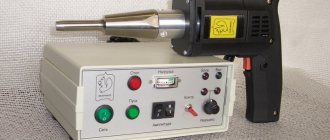During the manufacturing process of various metal products or parts, defects such as burrs, scale, remnants of casting particles, dirt, or areas of corrosion may form on their surface. All this must be removed from the surface. For these purposes, the tumbling method can be used. What it is? The technological process of processing metal by exposing it to bulk abrasive material, which, together with the parts, is placed inside special equipment and subjected to rotation or vibration.
After tumbling treatment, metal parts acquire a marketable appearance and in some cases may receive additional positive qualities. Abrasive is nothing more than particles of corundum, emery, sand or other materials. Bulk mixtures are used for dry tumbling of steel, while special solutions are used for wet tumbling. The tumbling method is sometimes used to polish products.
Purpose of metal tumbling
As mentioned above, metal tumbling allows you to remove the following defects from the surface of products:
- sharp edges when stamping sheet metal products;
- burrs formed during cutting of workpieces or turning;
- scale after welding or metal cutting;
- remnants of flash from parts made by casting.
In addition, tumbling effectively polishes products to a mirror-like surface. Parts that have been subjected to tumbling can then be subject to galvanic treatment or painting with powder mixtures.
If metal shot is added to the working medium or hydro-tumbling is used, then the tumbling method can be used to obtain compaction of the surface layer of workpieces (surface hardening), thereby increasing their strength.
What metals can be tumbled:
- special purpose alloys;
- black metal;
- structural steel;
- AISI stainless alloys;
- titanium materials;
- aluminum and its alloys;
- copper and copper-based alloys;
- silver products.
Drum tumbling, buy tumbling drum
Drum tumbling is intended for cleaning the metal surface from corrosion, rounding edges, removing burrs, and cleaning stamped and cast parts. The parts are removed manually into a container on a pallet. ADDITIONAL. EQUIPMENT
|
| *Control unit with timer is included in the price.. |
| Select and order |
MODEL Nominal drum diameter, mm Working volume, l Power, kW Voltage, V Cost, rub. Internal polyurethane coating
| MAG-2 | 100 | 2 | 0,15 | 220/380 | 20000 | 9000 |
| MAG-6 | 150 | 6 | 0,15 | 25000 | 10000 | |
| MAG-15 | 200 | 15 | 0.25 | 85000 | 12000 | |
| MAG-20 | 225 | 20 | 0,5 | 90000 | 15000 | |
| MAG-27 | 250 | 27 | 0,75 | 95000 | 17000 | |
| MAG-47 | 300 | 47 | 1,1 | 100000 | 18000 | |
| MAG-60 | 325 | 60 | 1,1 | 110000 | 19000 | |
| MAG-74 | 350 | 74 | 1,1 | 150000 | 19500 | |
| MAG-91 | 375 | 91 | 1,5 | 165000 | 21000 | |
| MAG-111 | 400 | 111 | 1,5 | 380 | 175000 | 23500 |
| MAG-217 | 500 | 217 | 1,5 | 190000 | 25000 | |
| MAG-280 | 600 | 280 | 4,0 | 250000 | 27000 | |
| MAG-446 | 700 | 446 | 7,5 | 300000 | 37000 | |
| MAG-665 | 800 | 665 | 11 | 450 000 | ||
| MAG-947 | 900 | 947 | 11 | choose | ||
| MAG-1300 | 1000 | 1300 | 15 | choose |
Order selection of technology and tumbling bodies
Tumbling machine
The Engineering Center produces drum finishing machines of various sizes.
COMMON DATA
Tumbling is designed to clean metal from scale and corrosion, and also allows you to round off sharp edges and remove burrs. Tumbling drums of hexagonal and cylindrical shape are used as equipment. Hexagonal drums provide optimal processing results when finishing various products.
The process of processing parts in a tumbling drum is as follows (see figure): when the drum rotates, the volume of parts in abrasive particles rises to the top, and an avalanche-like working area appears, in which the continuous process of cleaning parts occurs.
By design, tumbling drums can be divided into:
- two-support;
- two-support with an inclined axis;
- console (bell);
- perforated drums for wet finishing;
- special.
Tumbling drums differ in the design of the support units, the fastening of the lid, and the presence or absence of partitions inside. Partitions are used when processing small parts.
When processing heavy, large parts, such as castings, the chamber size is made so that one or two parts fit into the chamber.
When processing hard materials (stone, shot, etc.), small diameter drums are used.
Tumbling drums with an offset axis create complex, intense movement of parts inside the drum, as well as good mixing of them with abrasive material. During one revolution, the speeds of movement of parts are different, processing occurs more intensively and efficiently.
For fine grinding of parts (polishing and superfinishing), perforated tumbling drums operating in a special liquid are used.
Technical description of tumbling machines of the MAG series
Tumbling drums of the MAG series have a special polyurethane coating on the inside, which reduces noise during operation and also extends the service life of the drum.
We install speed controllers on all tumbling drums. The maximum speed of our tumbling machine is 35-45 rpm. The larger the drum diameter, the lower the rotation speed. For example, for a diameter of 500 mm, the rotation speed should be 30-40 rpm, for a diameter of 800 mm no more than 25 rpm.
A free-standing portable control panel increases the ergonomics of finishing equipment and ease of use.
We produce various tumbling drums, which you can buy by filling out an application.
When ordering a drum tumbling machine from us, you can count on high quality tumbling equipment and reliable support throughout its entire service life.
You can buy tumbling in Moscow from us around the clock, leave a request and we will contact you as soon as possible.
Tumbling equipment
There are several types of tumbling installations. The process in which processing is carried out using the rolling method is carried out in special drums. The design of the drum, if you look at it from the end, is made in the shape of a polyhedron - it is usually a hexagon or an octahedron. The drum itself has a hermetically sealed lid to prevent harmful abrasive dust generated during rotation from escaping. The rotation shaft of such tumbling drums is located horizontally and is driven by an electric motor. The standard rotation speed here is in the range of 20–60 revolutions per minute. The drums are suitable for tumbling flat metal workpieces.
Another type of tumbling equipment is a type of centrifugal machine made in the shape of a bell. The bell body is made of sheet metal about 3 millimeters thick. To prevent the steel surface of the equipment from damaging the product when the bell rotates, it is coated on the inside with plastic or rubber. The bell rotation shaft, as a rule, during tumbling is located vertically or at a certain inclination to the vertical. The standard rotation speed of the equipment is in the range of 10–50 rpm. Bells are suitable for tumbling operations on threaded hardware.
To perform tumbling operations using the vibration method, special chambers are used, equipped with mechanisms that create vibration (eccentrics). They force the camera to oscillate at a certain frequency from 50 to 15 Hz in different directions, while inside the working space a peculiar movement of workpieces and abrasive material is observed. Vibrating chambers are suitable for tumbling large parts that are pre-fixed inside.
Types and technologies of tumbling
Stone tumbling is carried out in several ways, taking into account the characteristics of the natural mineral, the method of its processing and fastening, as well as the type of mixing and the abrasive filler used. There are several types of equipment designed for tumbling stones.
Tumbling drum
Tumbling drum
The installation is of the most primitive type, having the form of a cylindrical or hexagonal prismatic drum. The machine can have different dimensions and be used both in large-scale production and by private jewelers.
The installation is easy to operate and is driven by an electric drive. An abrasive filler is loaded into it, which, due to the high speed rotation of the drum, grinds the stones.
Despite the ease of use, the tumbling drum has some disadvantages:
- It is difficult and almost impossible to perform uniform grinding of stones of complex shapes and delicate finishing of small samples;
- the design of the drum does not allow observation of the tumbling process;
- The car makes a lot of noise, which requires soundproofing.
Tumbling vibrator
Tumbling vibrator
The equipment also has the form of a drum, which is driven by a vibration drive. Stones and an abrasive mixture are placed in the drum; it is also possible to use liquid compositions for processing using the “wet” method.
When the machine starts, not rotational, but oscillatory movements occur; the contents of the drum begin to move inside in a certain order and speed. As a result, the top layer of the stone is delicately removed, the surface is ground and polished.
Due to the versatility and softness of processing, as well as the ability to observe each stage of processing, this type of installation is used by most jewelry makers.
Centrifugal type rotary machine
Centrifugal tumbling
One of the most common types of tumbling equipment, in which the tumbling mixture and processed stones are driven by blades. The drum, fixed motionless in a vertical position, is equipped with a rotating tray and blades inside. After loading the stones and abrasive filler, the machine turns on and the tray with blades is set in motion.
The advantages of this type of machine are:
- high performance;
- quality of finishing;
- possibility of adjusting the speed of rotation of the pallet;
- Possibility of grinding large batches of stones.
Along with the advantages, this machine also has disadvantages. These include the impossibility of processing large stones, low wear resistance of the internal part of the compartment and the high cost of the equipment.
Tumbling "towing" installation
Towing tumbling
The equipment is not intended for processing large quantities of stones, so it is rarely used. The unit is used to grind and polish single-piece products that require high-quality finishing.
The stone to be processed is fixed on a spindle, which is then set in motion and lowered into a container with abrasive filler. As a result, a thin layer is removed from the surface of the stone in a short period of time.
Consumables
The material that is consumable when performing tumbling is various tumbling fillers. These include all kinds of dry abrasives that are erased into dust, pastes subject to wear, and tumbling bodies. The latter are solid particles of a certain shape and fraction:
- prismatic ceramic particles;
- fine scrap of porcelain and marble;
- steel shot;
- abrasive bodies made of plastic;
- zirconium oxide;
- emery and corundum.
Process description
The tumbling technology is not difficult to understand: it is based on the same effect of abrasive on the surface layer of the metal, but unlike abrasive discs, bulk abrasive is able to penetrate into any hard-to-reach places of the product, which is a great advantage.
Another advantage can be considered the fact that the tumbling processing method does not lead to overheating of the workpiece. As the drum or centrifuge rotates during the tumbling operation, the abrasive naturally rubs against the surface of the metal parts and scrapes off a thin layer of coating that is invisible to the naked eye. Since this friction occurs constantly, the thickness of the metal is removed, and with it all defects.
The disadvantage of tumbling technology is that the product after processing may not correspond to the original linear dimensions, deformation of the shape occurs, therefore tumbling modes and abrasives must be carefully selected.
In production, there are two main methods of processing metal using this method:
- tumbling in a dry environment;
- tumbling in a damp environment, or wet tumbling.
In the first case, the abrasive consists of different bulk components.
This method of metal processing is suitable if you need to carry out finishing or eliminate burrs. The duration of tumbling is determined only by the condition of the product and can reach several days. In the process of so-called wet tumbling, parts are placed in solutions of different compositions, but essentially this is a mixture of dry abrasive with caustic or soda ash, the soda solution should be two or three percent. It is permissible to use a soap solution.
It should be clarified that the rotation speed of the equipment during tumbling is selected based on the following indicators:
- sizes of metal products, their shapes;
- volume of the working chamber of the equipment;
- the result that needs to be achieved during tumbling processing.
Processing in a tumbling drum (tumbling)
Tumbling metal in Moscow really proves that everything ingenious is simple. To carry out the process, only three components are required: the part itself, abrasive substances for cleaning and a container (drum) in which the cleaning will take place. A wide variety of substances—particles—can serve as fillers (abrasives) for tumbling:
- ceramics,
- wood,
- plastic,
- glass,
- porcelain.
For some types of processing, even the shells of coconuts or walnuts are used. For more complex and effective tumbling methods, for example, for tumbling copper, additional substances can be added to the abrasives. For example, water and the so-called compound. The latter refers to a combination of several chemicals designed not only to clean the metal, but to give it a characteristic gloss. Inhibitors, stearin and coagulants are usually used as components of the compound.
